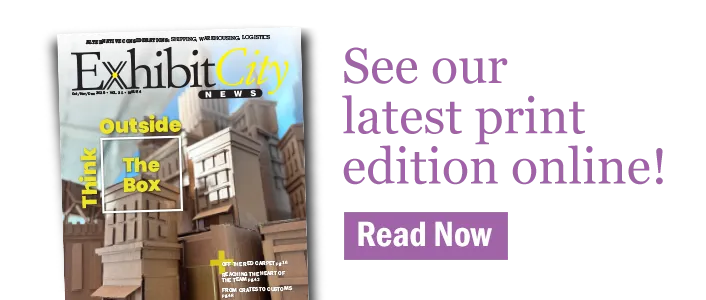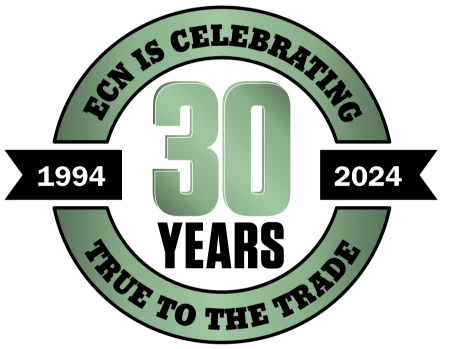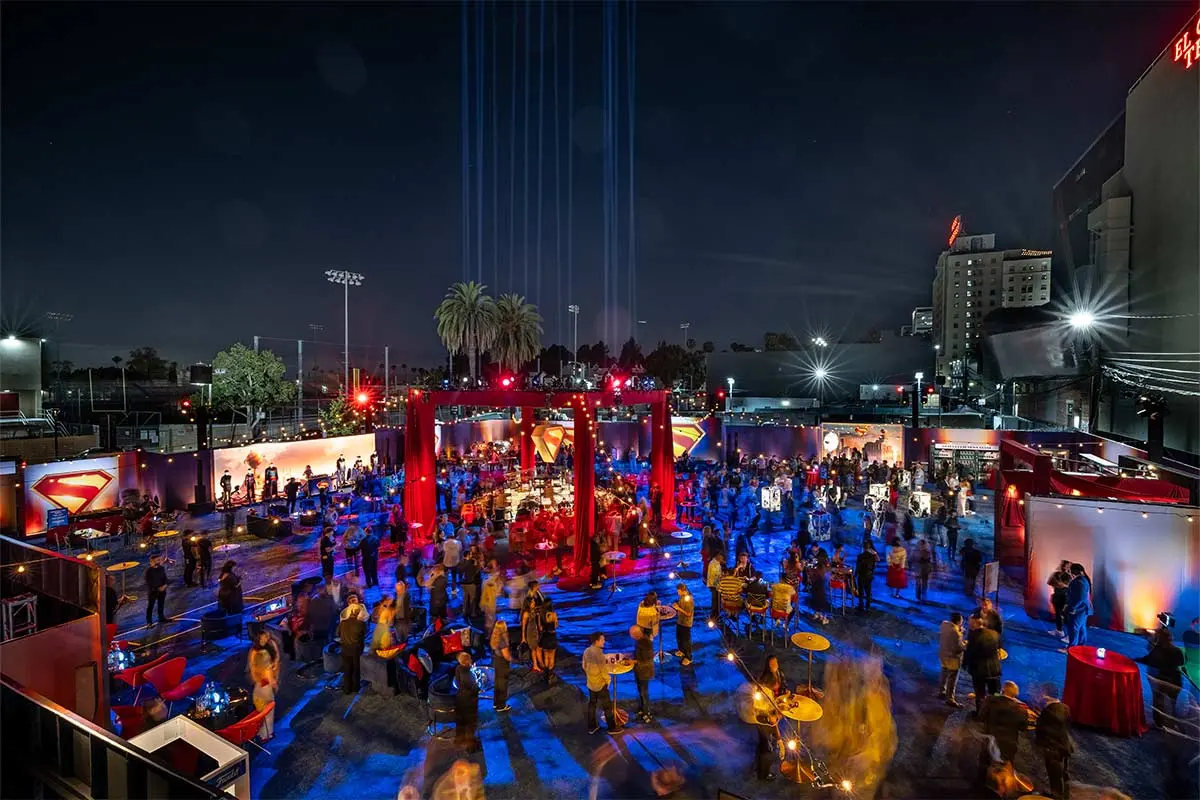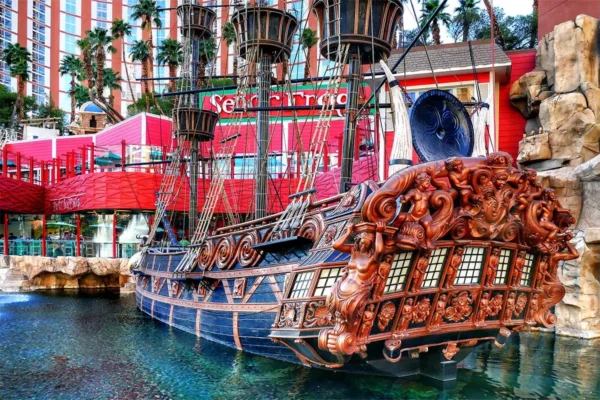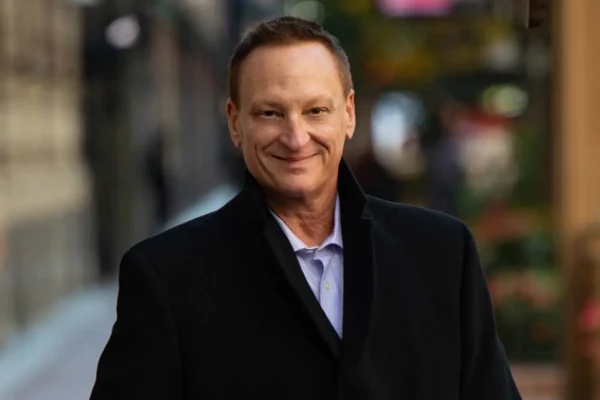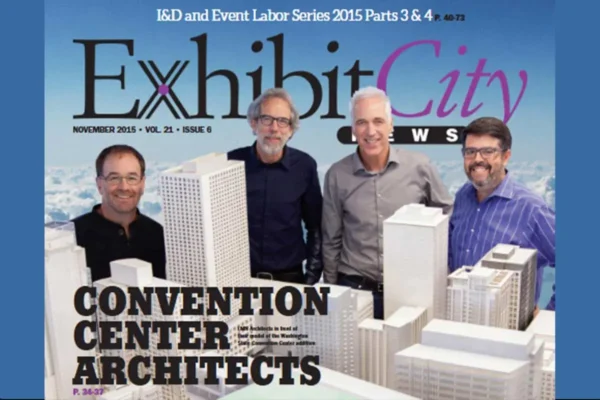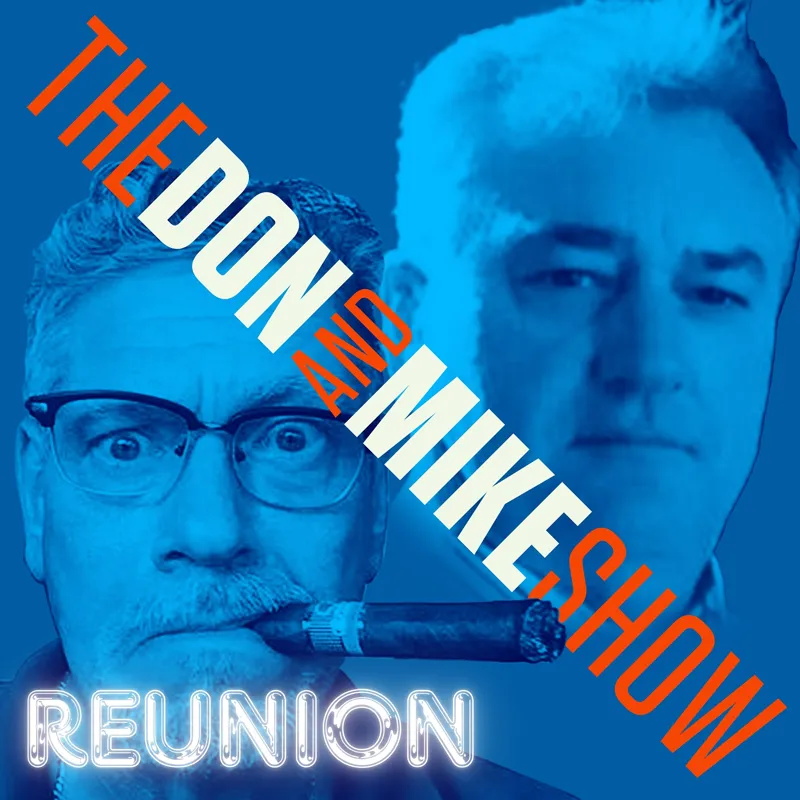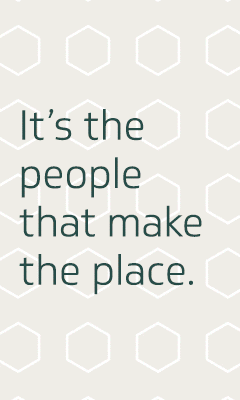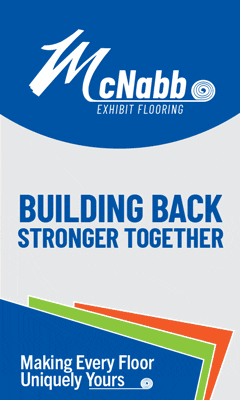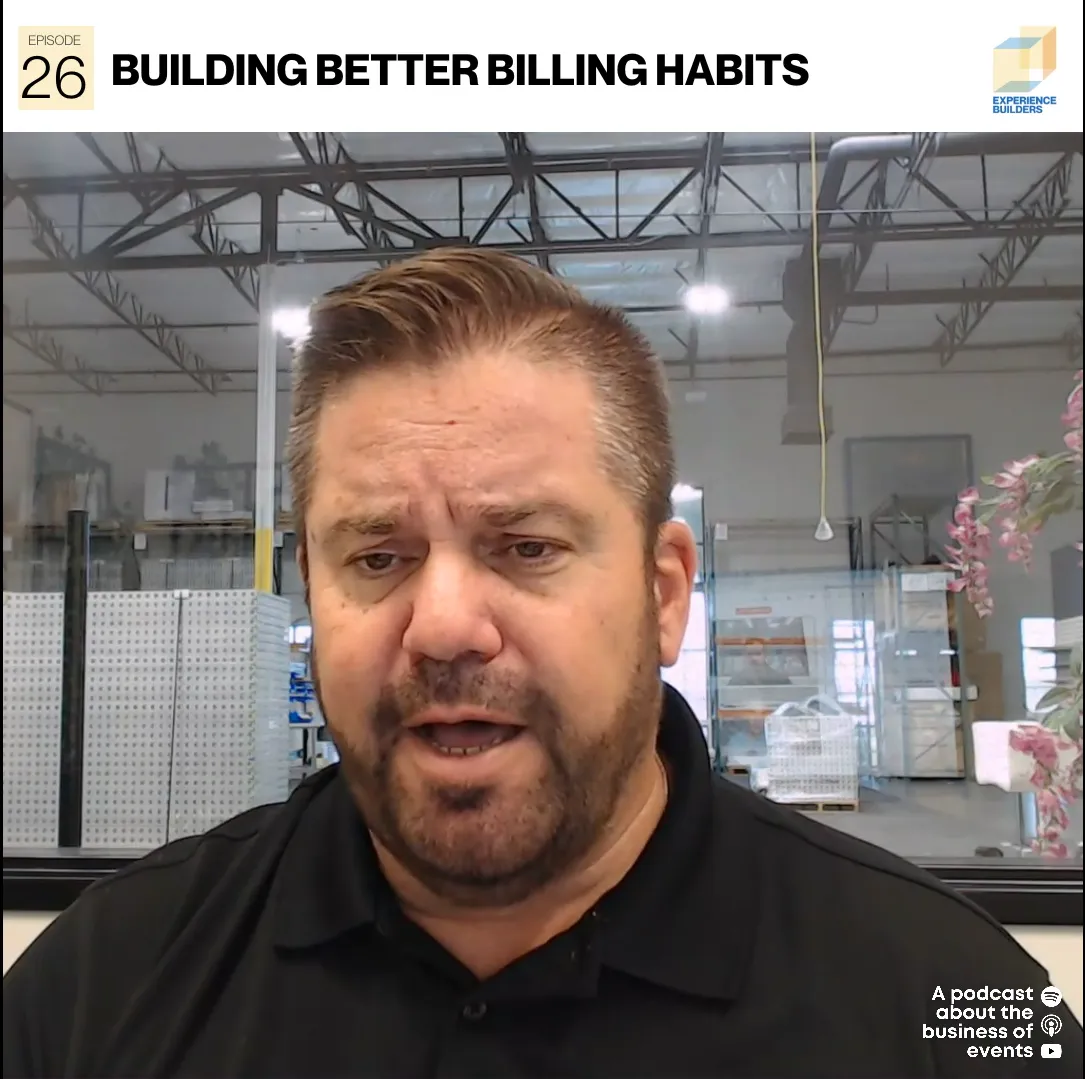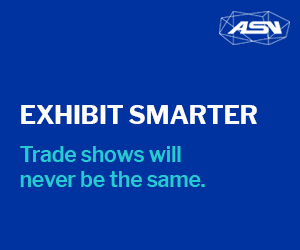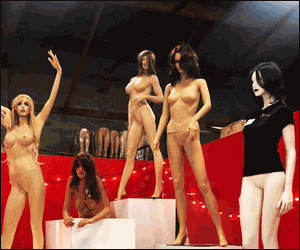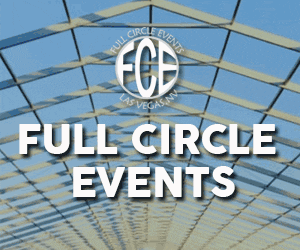Sound stages, spotlights, and staffing, oh my! Welcome to Hollywood, keeper of the glitz and the glam, the red carpets and the rolling cameras. For many in the tradeshow world, Hollywood has always seemed like an entirely separate universe. The silver screen is a place where big budgets and famous faces top the call sheet. It’s a world that feels far removed from the realities of convention centers, exhibit halls, and 20-by-20-foot booths.
But here’s the plot twist: Hollywood is not so far away at all. Tradeshow companies have been set dressing the big screen, the small screen, and the red carpets in between. The same skills, products, and problem-solving muscles that power the show floor are premiering on soundstages, at press events, and behind the velvet ropes. Conversely, some would argue that visuals and experiences found at tradeshows and conventions are as dazzling as any box-office hit. The Hollywood and tradeshow crossover has been happening for decades.
Opening Credits: A Familiar Scene
Step onto a Hollywood soundstage and you might think you’ve stumbled onto a show floor during set-up. Overhead trusses, lighting grids, and staging platforms dressed in scenic panels come together in a familiar scene. Audio equipment hums quietly in the background as the cast of characters takes their places. To a seasoned tradeshow pro, it feels like install day, only the “client” happens to be a studio head instead of a tech brand.
As any well-heeled pro will tell you, when you walk onto the floor of a show like CES, it can feel like a movie premiere. Dramatic lighting, layered sound design, and cinematic reveals are on consistent rotation during show hours. Blockbuster-worthy unveilings roll out in plumes of smoke and a sea of lasers while a spine-shaking soundtrack draws the crowds closer. Guests are handed 3D glasses when they enter a room with a wrap-around screen that stretches to the ceiling. Concessions flow while the who’s who of the industry rub shoulders and shake hands.
Product launches on the show floor are not unlike stage sets or movie premiere press tours. Build a world, control the environment, and tell a story. Set it up, tear it down, and build it in another city. Art imitates life, and life imitates art as you jump from the convention carpet to the red carpet. The players who build both are the same.
Many fabrication houses that once only built for trade exhibits now supply custom scenic pieces for commercials, television specials, and awards shows. Many prop houses that sculpted props for movies now build oversized products for conventions. CNC machines cut the same precision shapes, regardless of whether it’s for a branded talk show desk or a booth wall. AV providers who light exhibit halls also program dramatic key lighting for live concert broadcasts. Furniture rental companies find their inventory not just on the show floor but in VIP green rooms for talent interviews. At the core, both industries are about storytelling. However, one sells products or services, the other sells entertainment. But the tools are twin flames.
Paul Pearson, owner of Custom Props Incorporated, understands that nuanced dance between the similarities and differences as much as anyone. Pearson began his career designing models and props for film and television 52 years ago. His work has been featured on the silver screen in movies like Batman and Starship Troopers, and television in Star Trek, True Blood, and Lost. A few decades into his career, when movie locations began expanding from the West Coast and business was drying up, Pearson discovered a revenue source that he hadn’t considered before.
“One day, a guy walked into my shop and asked me if I’d ever designed for tradeshows.” The rest was history. For the next few decades, Pearson’s business bounced between Hollywood and convention centers. The players and equipment are largely the same.
“It’s the same things: the same guy, the same shop, the same machinery, the same disciplines,” observes Pearson. “But the end game is different.” When asked what the glaring difference is, he is thoughtful, “When you’re designing something for a film, you’re trying not to distract from Brad Pitt. But, when you’re doing something for a convention, the prop is the focus.”
The Target Audience: Show Business vs Real Business
Despite the similarities, the subtle variances start to become more apparent when you take a deeper look at their attendees. Both industries generate buzz, but their target audience is different. When it comes to tradeshows, attendees are not passive viewers; they are there to engage in real business. That’s not to say that Hollywood isn’t doing “real” business; they are. But it’s the business of show.
“Tradeshows are primarily intended for business promotion, networking, and marketing specific industries, while Hollywood premieres, pop-ups, and product launches aim to generate buzz, media coverage, and public interest,” says Fritz Williams, president and owner of FormDecor.
Williams understands the subtle differences of the target audience. FormDecor’s portfolio is almost an event split between the glamour of film and TV and the promotional world of tradeshows and convention business. With decades in the furniture rental business, his products have lined the carpets of premieres and live events for more than 25 years. He’s seen both sides of the lens.
Williams expands, “Each industry’s objective is marketing and getting eyes on the products, and have some similarities, but Hollywood events are more focused on buzz and media, while tradeshows focus on disseminating information.”
Plot Twist: Tradeshow’s Shine Bright
Despite their similarities or different audiences, there are a few key points that can make you give both worlds a double-take.
The convention industry is built for endurance. You can set a watch to the fluid symphony that is load-in, event days, and load-out. In three to five days of continuous operation and with attendees cycling through waves, there is a predictable flow. Hollywood, by contrast, is often built for a single, high-intensity moment. A sunset scene that lasts for two seconds on screen can take more than a month to prepare for. A premiere may require a week of prep for two hours of live spectacle. A television set may exist for one day’s shoot before being completely transformed for the next episode.
In tradeshow production, there’s usually more predictability: show hours are fixed, booth spaces are mapped, and attendee counts are relatively consistent. In Hollywood, the variables have softer edges. Outdoor shoots marred by weather, last-minute script changes, and moody leading men can bring production to a standstill.
Budget distribution also differs. Tradeshow clients often allocate the lion’s share to booth design and logistics. Hollywood spends heavily on talent and post-production, which can mean production crews work with leaner physical budgets but higher pressure for visual perfection.
Perhaps most intriguing is that the personalities behind the scenes are also wildly varied. Typically, the drivers and stakeholders behind the tradeshow and convention industry are businesspeople. In Hollywood, that circle is usually fueled by the temperaments and behavior of artists.
“It took me every bit of 25 years to get used to the whole undone nature of the artists on both ends of that equation,” states Pearson, when reflecting about his experiences in Hollywood. “The people in the tradeshow and exhibit business are generally from the marketing departments, and they’re the ones controlling the artistic look of what they’re selling, but behind them is a big company. When I’m talking to someone in their art department, they are normal people, with husbands who coach Little League. They just aren’t as bent out of shape as people in Hollywood.”
Standing Ovation: Hollywood Lessons to Learn From
Excluding the diva act, the show floor can learn a lesson or two from Hollywood. Working in entertainment gives tradeshow professionals new perspectives they can bring home to their primary industry.
Entertainment thrives on unexpected moments. Plot twists, cameos, stunts, hidden references; the list can go on and on. Tradeshow experiences can borrow that playbook, planting cinema-worthy surprises that attendees talk about long after the event ends. Hollywood shines with theatrical storytelling. Leaning into teaser trailers or behind-the-scenes clips leading to the event builds the hype (and the brand narrative). On the show floor, continue that storytelling with booth engagement and interactions that captivate and stun.
Not to mention, leveraging social media and influencers can generate a buzz not always associated with a convention or exhibit. “Tradeshows could learn to be more energized and promoted as an event with influencers and stronger social media emphasis,” advises Williams.
Finally, consider the perspective of the booth through a lens. By adapting a “camera-ready” focus on booth design, exhibitors can create silver screen drama from the moment guests lay eyes on the booth’s footprint.
Hollywood may still carry the aura of a separate world, wrapped in celebrity and cinematic magic. But the truth is, tradeshow professionals have been part of that magic for years. So, the next time you’re on a tradeshow floor, surrounded by glowing screens, scripted reveals, and carefully staged moments, look down. You may realize you’re actually on the red carpet after all.
This story originally appeared as a truncated version in the Q4 2025 issue of Exhibit City News, p. 16. For original layout, visit https://issuu.com/exhibitcitynews/docs/exhibit_city_news_-_oct_nov_dec_2025/16.



